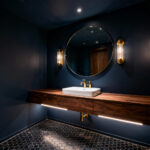Imagine waking up each morning feeling completely refreshed and at peace, as if you’ve been transported to a tranquil oasis far away from the stresses of everyday life. This isn’t just a dream – by embracing minimalist design principles, you can transform your bedroom into a personal sanctuary that promotes ultimate relaxation and rejuvenation.
As an interior designer passionate about sustainable living, I’ve witnessed firsthand the transformative power of creating mindful spaces. A minimalist bedroom isn’t just about aesthetics; it’s a holistic approach that considers how every element, from the color palette to the furniture choices, can impact your overall well-being.
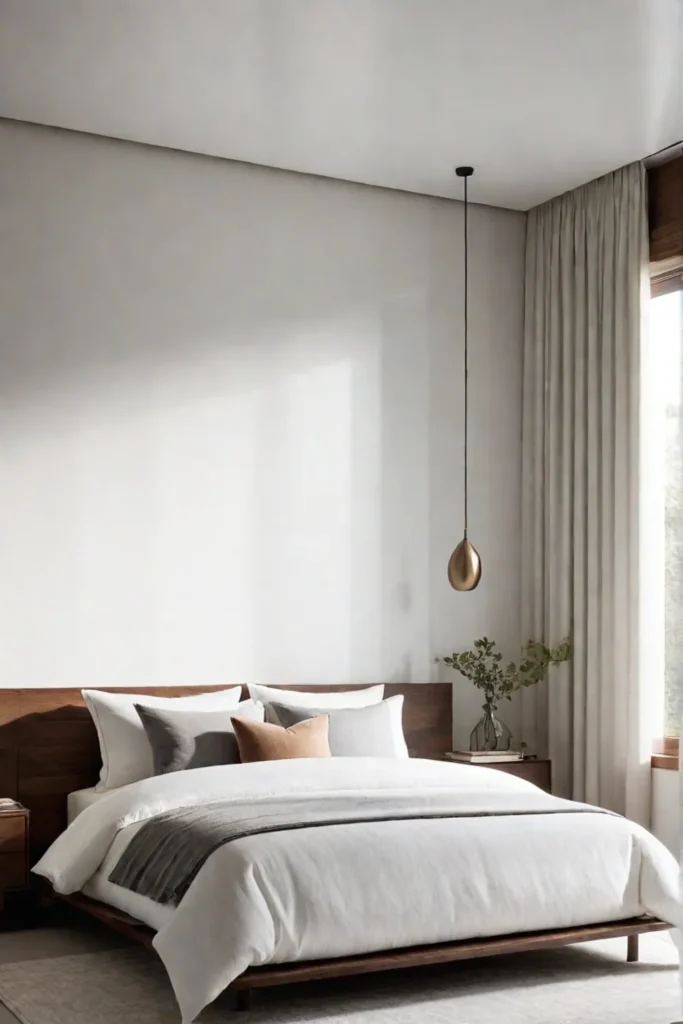
This comprehensive guide will share my expert insights and practical tips for curating the perfect minimalist bedroom retreat. We’ll explore the art of decluttering for serenity, the power of neutral color palettes, the beauty of incorporating natural materials, and the importance of functional furniture that marries form and purpose. Plus, I’ll reveal the secrets to harnessing light and space to create an airy, zen-like ambiance that invites deep relaxation.
So, are you ready to embark on a journey towards a more mindful living experience? Let’s dive in and discover how to transform your bedroom into a personal oasis that nurtures your mind, body, and soul.
Decluttering for Serenity
Can you imagine spending 12 days each year searching for misplaced items? That’s the reality for many of us drowning in clutter! As a home decor enthusiast, I can’t stress enough how crucial decluttering is for creating a truly serene minimalist bedroom.
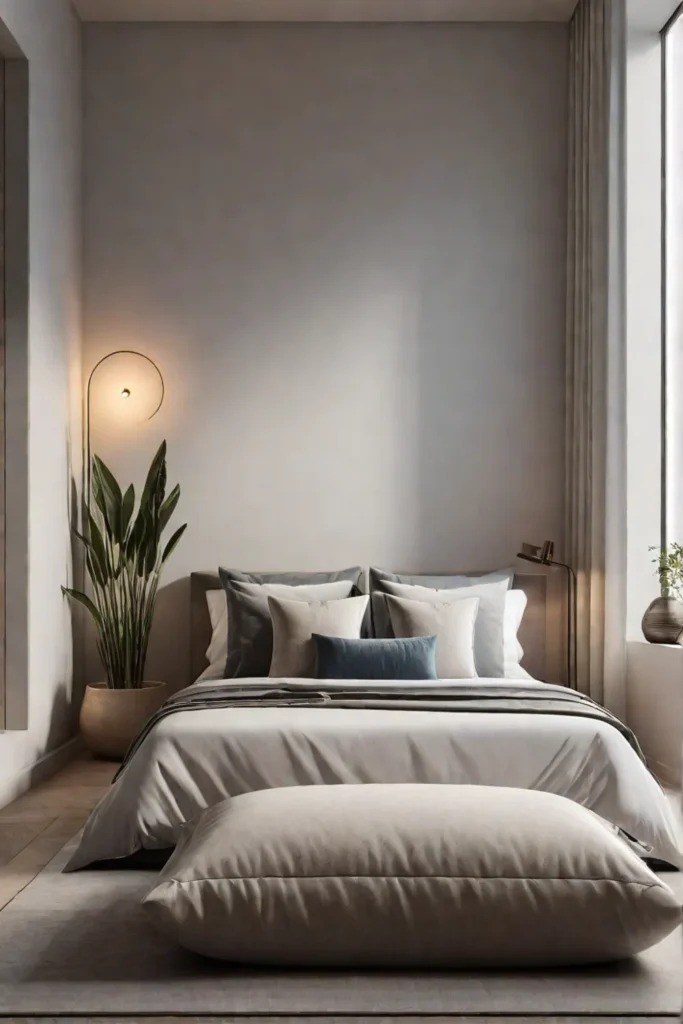
The Impact of Clutter on Well-being
Numerous studies have shown a direct link between cluttered spaces and elevated stress levels. Visual clutter can be a constant source of distraction, making it difficult to relax and unwind. This can lead to restless nights and poor sleep quality in the bedroom, leaving you feeling drained instead of rejuvenated.
Effective Decluttering Strategies
The first step to achieving a minimalist sanctuary is to ruthlessly purge anything that doesn’t serve a purpose or bring you joy. Start tackling surfaces like nightstands and dressers, then move on to closets and drawers. Invest in smart storage solutions like baskets and under-bed organizers to keep essentials neatly tucked away.
One decluttering approach I swear by is the KonMari method, which encourages keeping only items that “spark joy.” It’s a mindful process that helps you let go of possessions that no longer align with your values or lifestyle.
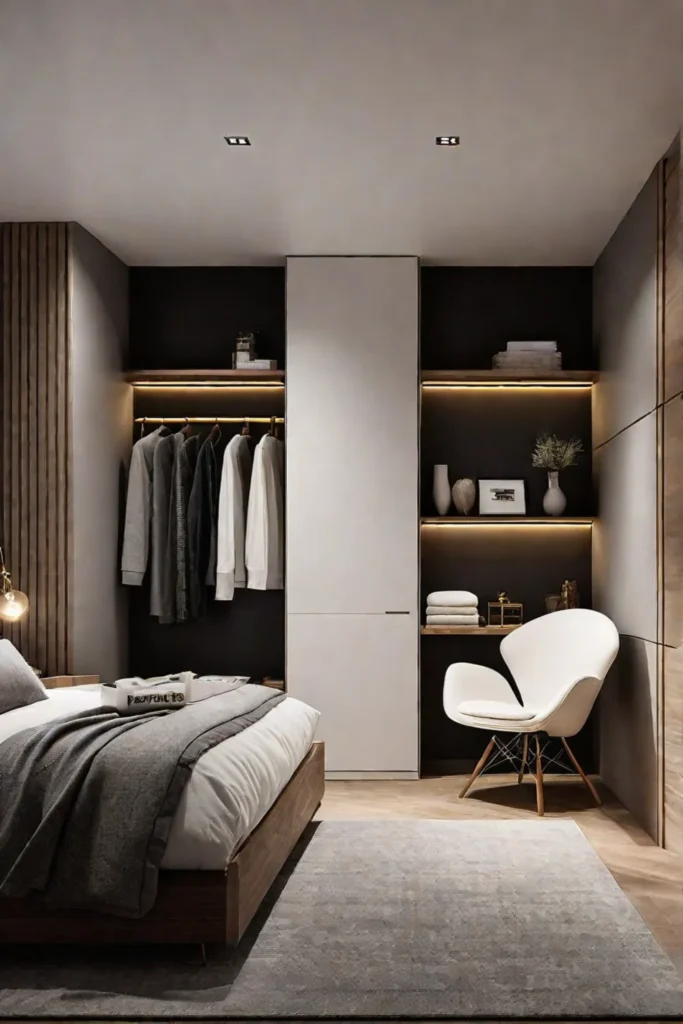
The Psychological Benefits of a Minimalist Bedroom
Beyond the physical act of decluttering, embracing a minimalist aesthetic in your bedroom can have profound psychological benefits. A clutter-free environment promotes mental clarity, allowing you to relax and recharge truly. With fewer distractions, you’ll find it easier to focus on self-care practices like meditation or journaling, further enhancing your overall well-being.
Decluttering is the first step towards creating a truly zen bedroom oasis. But to fully embrace the minimalist aesthetic, you’ll also want to consider your color palette carefully.
The Power of Neutral Color Palettes
Have you ever felt a sense of calm and serenity upon entering a space? The secret often lies in the power of neutral color palettes. As a minimalist design enthusiast, I can’t emphasize enough how transformative the right shades can be in creating a true oasis of relaxation.
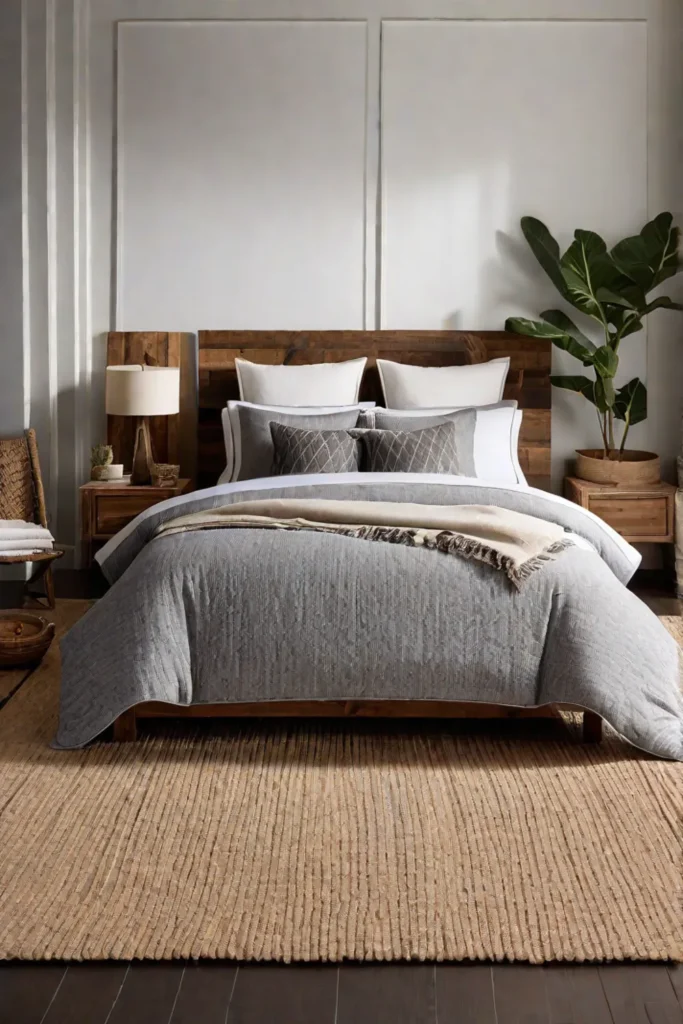
Choosing the Right Neutral Palette
Regarding neutral colors, we’re talking about understated yet elegant hues like beige, gray, white, and soft pastels. These shades are absolute gems for minimalist bedrooms because they provide a versatile backdrop that allows other design elements to shine. But don’t be fooled by their simplicity – the right neutral palette can enhance natural light and create a spacious, airy feel.
Incorporating Accent Colors
While neutrals are the show’s stars, accent colors can add the right personality and visual interest. Think about the mood you want to create – if you’re aiming for ultimate relaxation, consider the scientifically proven power of blue in lowering heart rate and blood pressure. Or, if you’re yearning for a connection with nature, shades of green can evoke feelings of peace and tranquility.
The Art of Balance
The key to mastering neutral color palettes lies in striking the perfect balance. Use accent colors sparingly, like a carefully placed piece of art or a cozy throw blanket. Remember, less is often more in the world of minimalism. By allowing the neutral tones to take center stage, you create a sense of harmony and calm that invites you to unwind.
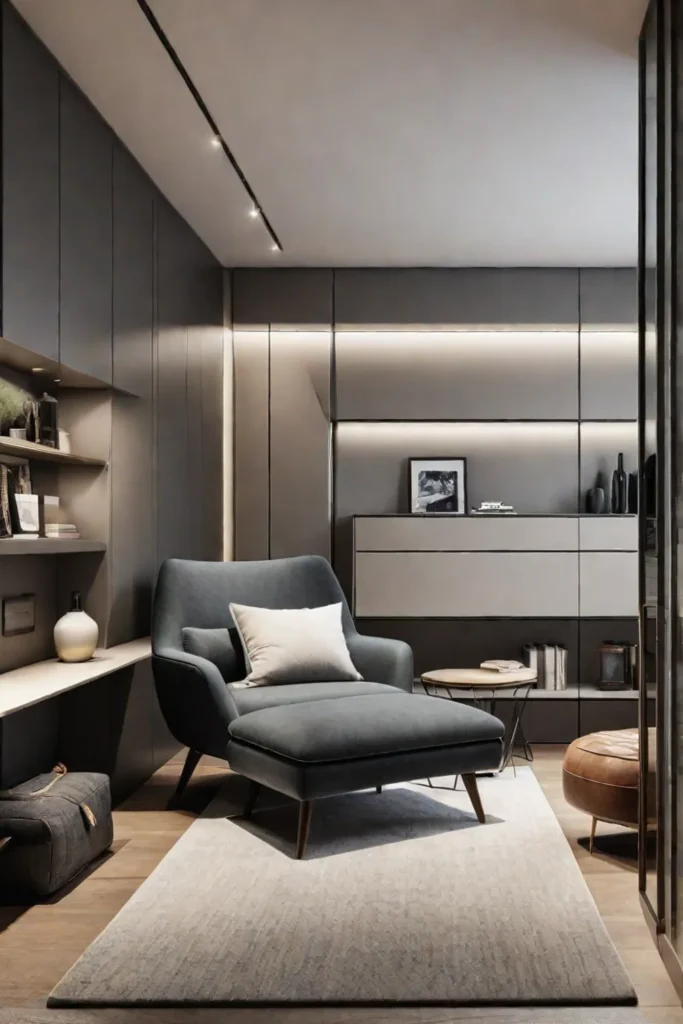
Neutral color palettes are the foundation of a serene, minimalist bedroom. When combined with thoughtful accents and a keen eye for balance, they can transform your space into a personal haven – a true Zen zone where you can leave the day’s stresses behind.
Are you ready to harness the power of color in your minimalist bedroom design? The possibilities are endless, and the path to ultimate relaxation starts with the perfect neutral palette.
Embracing natural materials is another essential element in creating an organic, harmonious, minimalist bedroom. (Use this as the transition to the next section)
Natural Materials for Organic Harmony
Have you ever felt an inexplicable sense of calm wash over you in nature? It’s no coincidence – natural materials like wood and stone have inherent calming properties that can bring a touch of serenity to your minimalist bedroom sanctuary.
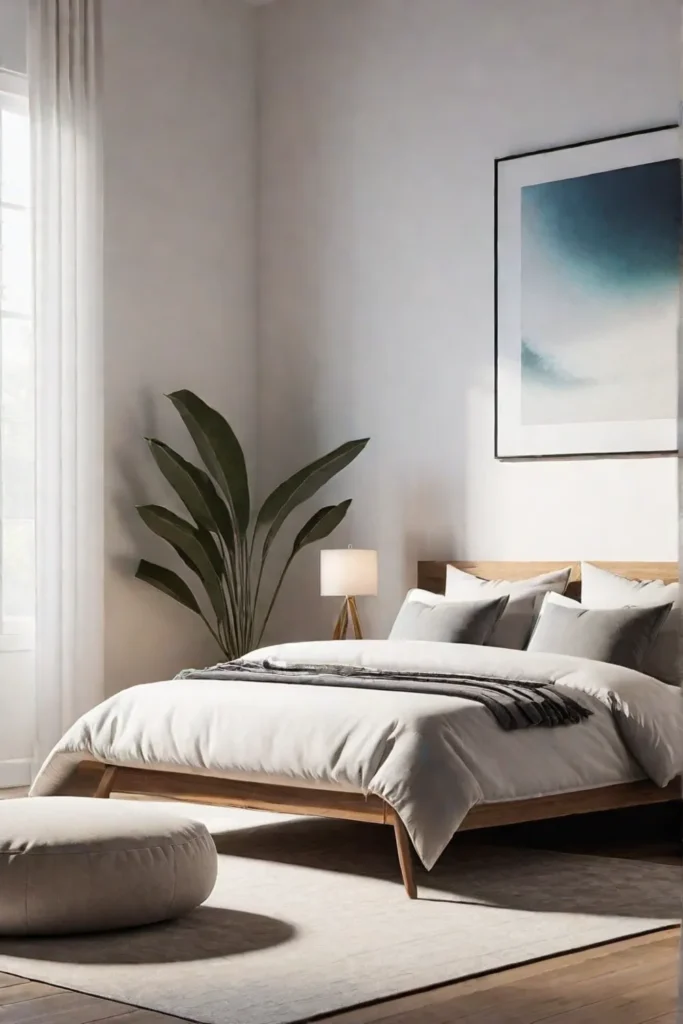
Types of Natural Materials for Bedrooms
As a passionate interior designer, I can’t get enough of the warmth and texture that natural materials add to a space. Consider incorporating wood for flooring, furniture, or decorative accents for the bedroom. The rich grains and organic patterns create a cozy, inviting ambiance. Stone elements, whether an accent wall or decorative objects, add depth and visual interest. And let’s not forget about natural textiles like cotton, linen, or wool for bedding and curtains – they’re beautiful but also breathable and sustainable.
Benefits of Incorporating Natural Elements
Beyond their aesthetic appeal, natural materials offer many benefits for your well-being. Exposure to natural elements has been linked to reduced stress and improved overall well-being, making them the perfect addition to your zen zone. And if you’re eco-conscious like me, you’ll be happy to know that sustainable materials promote a greener, more environmentally friendly lifestyle.
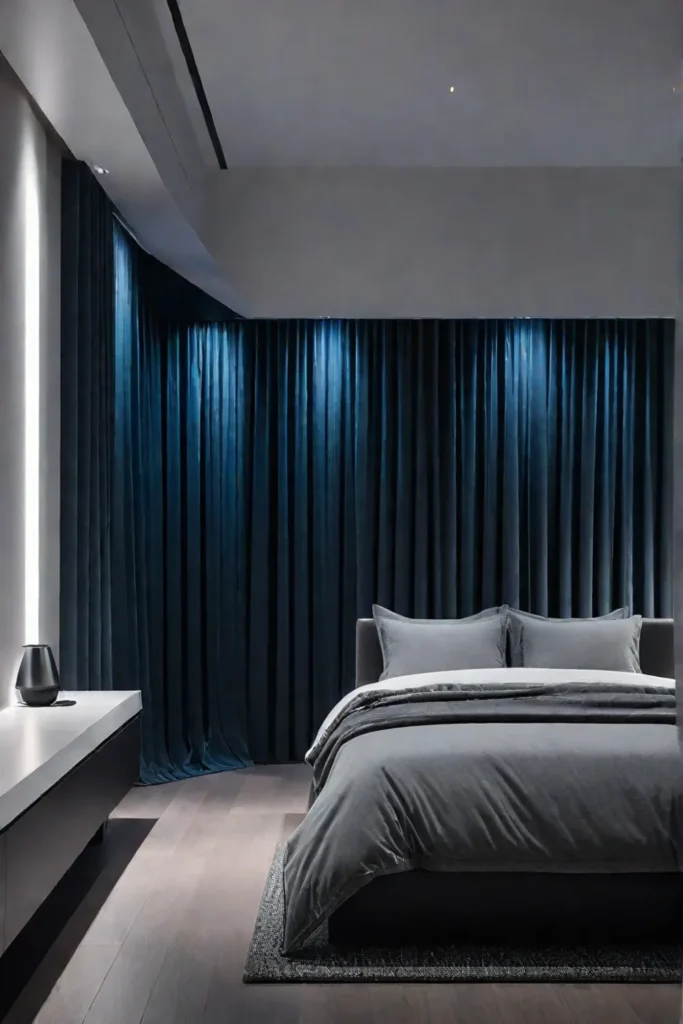
How do natural materials impact indoor air quality, you ask? Well, many synthetic materials can off-gas harmful chemicals, but natural options like wood and plant-based textiles are safer choices for maintaining healthy indoor air. And let’s not forget the psychological benefits of incorporating nature into your interior design—it can help you feel more grounded and connected to the world around you.
The key takeaway? Natural materials enhance the minimalist aesthetic and promote relaxation while also contributing to a healthy and sustainable living environment. It sounds like a win-win to me!
Functional furniture is the key to maximizing space and minimizing clutter in your zen zone. But how can you strike the perfect balance between form and function? Let’s dive into the next section to find out!
Functional Furniture: Form Meets Purpose
As a minimalist design enthusiast, I believe furniture should serve a purpose beyond aesthetics. In a minimalist bedroom, every piece should earn its place by being functional and streamlined.
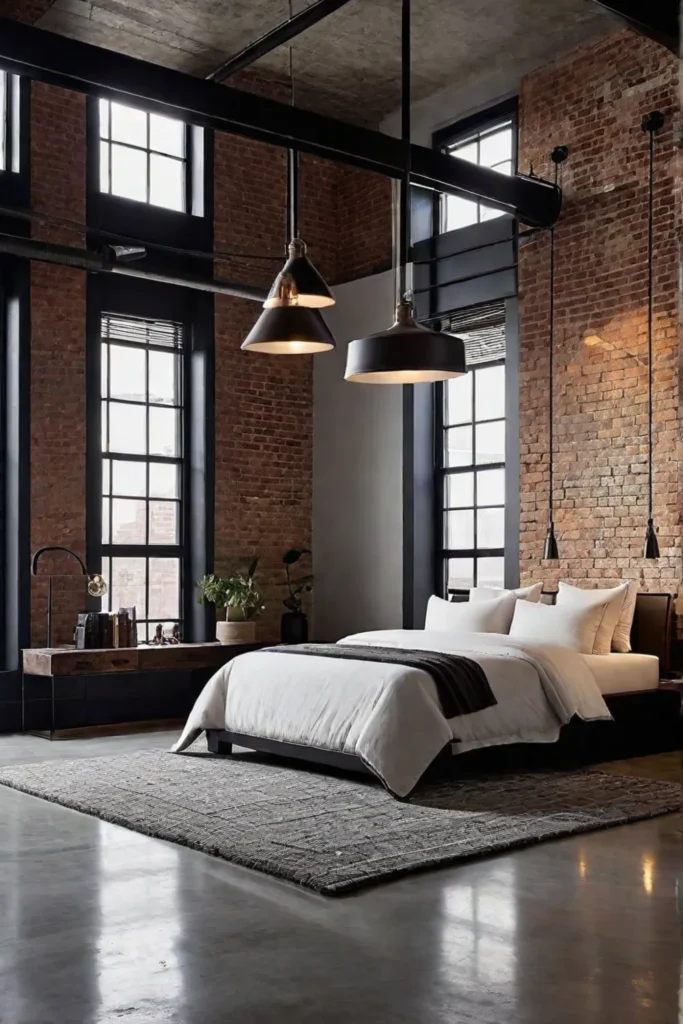
Essential Furniture Pieces for a Minimalist Bedroom
Let’s start with the basics: a bed, a dresser or wardrobe, and perhaps a bedside table or two. But here’s the catch – these pieces should be chosen with intention, favoring clean lines and simple designs. A platform bed with built-in storage is a perfect example, as it looks sleek and provides valuable space for storing extra linens or out-of-season clothes.
Choosing Furniture with Clean Lines and a Simple Design
Minimalist furniture often draws inspiration from Japanese and Scandinavian styles, known for their understated elegance and emphasis on functionality. When selecting pieces for your minimalist haven, opt for those with a pared-down aesthetic and a focus on quality over quantity. A well-crafted dresser with ample drawer space or a wardrobe with a minimalist design can serve as both a storage solution and a stylish statement piece.
Multifunctional Pieces: The Key to Optimizing Space
One secret to achieving a truly minimalist bedroom is embracing multifunctional furniture. A storage ottoman can double as a coffee table or extra seating, while a bedside table with shelves can house your favorite books, plants, or decorative accents. By investing in versatile pieces, you not only maximize the functionality of your space but also reduce visual clutter, creating a serene and organized environment.
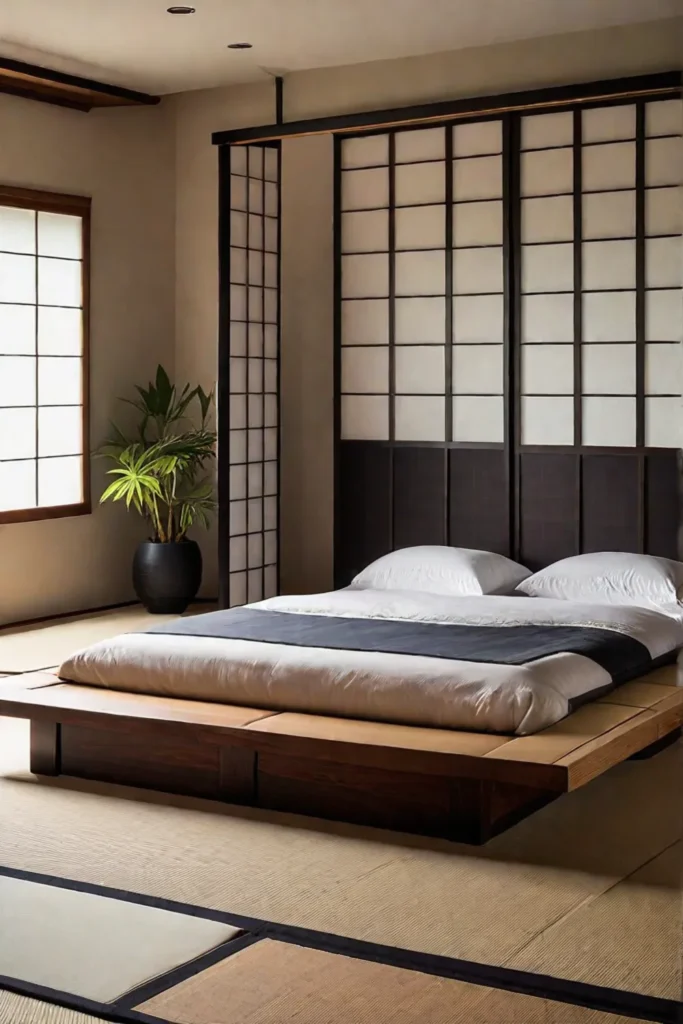
How does furniture design impact the functionality of a bedroom? By prioritizing clean lines, simple designs, and multifunctional pieces, you can create an aesthetically pleasing and highly practical space. And let’s not forget the benefits of investing in high-quality, minimalist furniture—not only will it elevate the overall look and feel of your bedroom, but it can also contribute to a more sustainable lifestyle by reducing the need for frequent replacements.
Remember, functional furniture is the backbone of a minimalist bedroom. By carefully curating pieces that merge form and purpose, you’ll be well on your way to creating a Zen-like sanctuary that invites ultimate relaxation.
Imagine waking up each morning in a space that exudes calm and order – that’s the power of functional furniture in a minimalist bedroom.
Creating with Light and Space
As a minimalist design enthusiast, I firmly believe that lighting and a sense of openness are the secret ingredients to creating a zen bedroom sanctuary. After all, who doesn’t love waking up to the gentle warmth of natural sunlight and feeling like they’re floating in an airy, stress-free oasis?
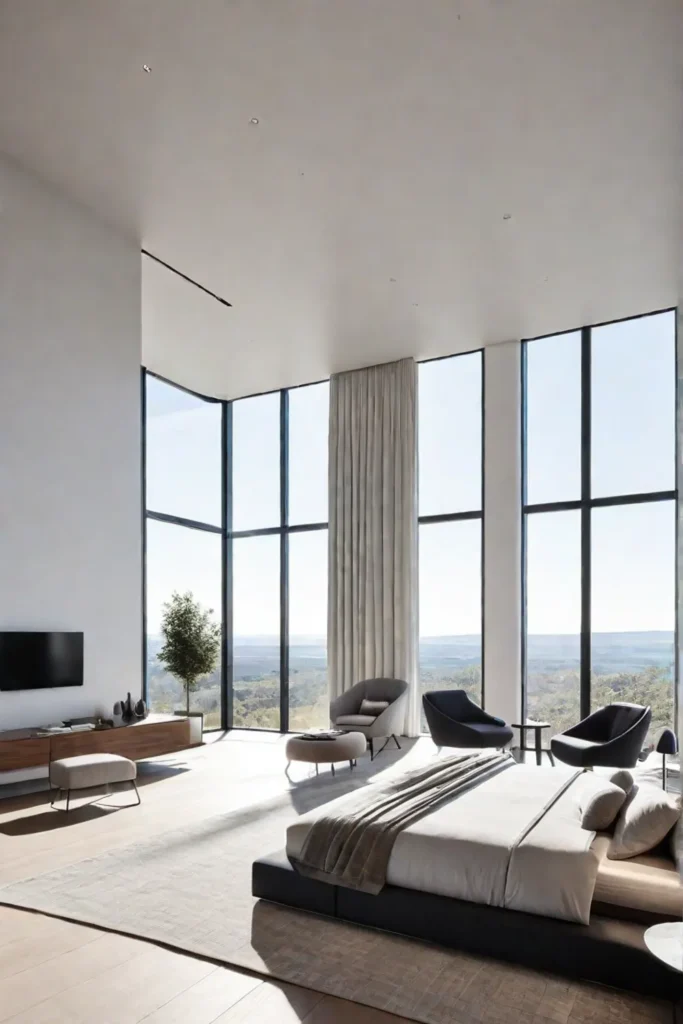
Utilizing Natural Light
Let’s start with the holy grail of bedroom lighting: natural light. Did you know that exposure to sunlight has been scientifically proven to boost mood, improve sleep quality, and even increase productivity? It’s like having your happiness pill streaming through your windows! To maximize these benefits, I recommend using sheer curtains or blinds that allow soft, filtered light to fill the space while maintaining privacy. And don’t forget to place mirrors around the room strategically – they’ll reflect that gorgeous natural glow, making your minimalist haven feel even more open and inviting.
Choosing the Right Lighting Fixtures
Of course, we can’t rely on Mother Nature’s lighting 24/7 (although, wouldn’t that be dreamy?). That’s where carefully curated artificial lighting comes into play. Different types of bulbs and fixtures can create vastly different moods and atmospheres, so it’s important to choose wisely. For a relaxing, zen-like ambiance, I suggest a combination of soft, ambient lighting (think warm Edison bulbs or dimmable sconces) paired with task lighting (like a minimalist desk lamp) for when you need to get stuff done. And don’t forget a few well-placed accent lights to highlight your favorite minimalist decor pieces or create cozy nooks for curling up with a good book.
Creating a Sense of Spaciousness
Last but not least, let’s talk about the ever-important element of space. As any minimalist knows, clutter and cramped quarters are the enemies of relaxation. That’s why creating a sense of openness and breathing room is key in the bedroom. Aside from keeping decor to a minimum and sticking to a calming color palette, you can also use clever tricks like floating shelves and wall-mounted lighting to free up floor space. And, of course, those strategically placed mirrors we discussed earlier will work wonders for making even the coziest of minimalist bedrooms feel like a luxurious, open-concept retreat.
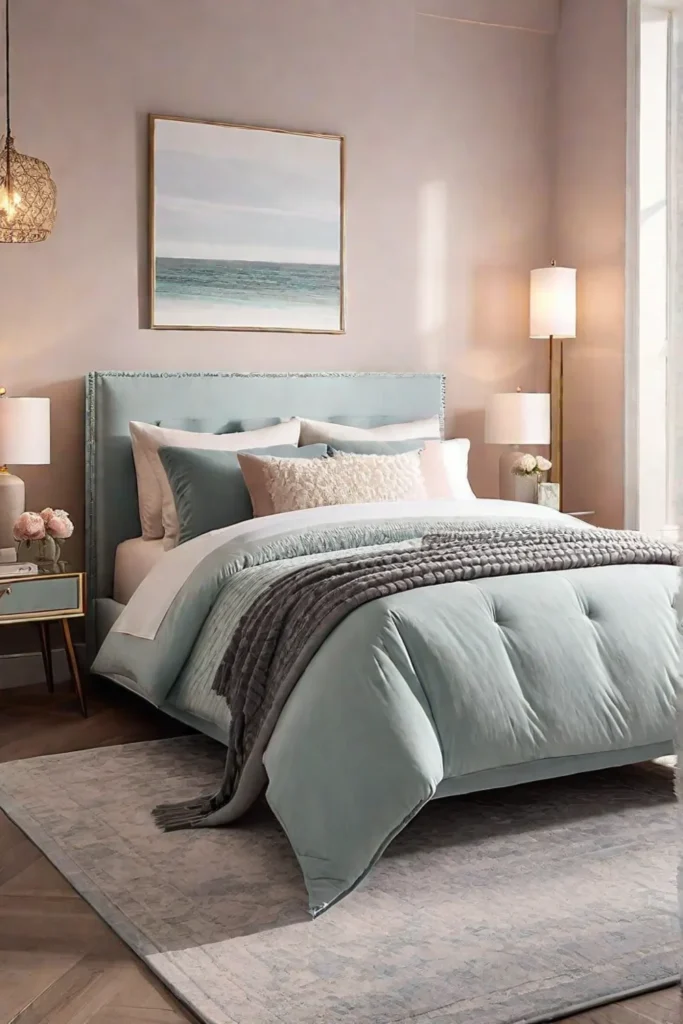
Speaking of creating that airy, stress-free vibe, did you know that lighting can impact our circadian rhythms and sleep patterns? It’s true! Warm, dimmed lighting in the evenings helps signal to our bodies that it’s time to wind down, while bright, cool-toned light in the mornings can help us wake up feeling refreshed and energized. Pretty cool, right?
How do you like to use lighting to set the mood in your minimalist bedroom? I’d love to hear your tips and tricks! In the meantime, I’ll leave you with this key takeaway: by optimizing light and space, you can transform your sleeping quarters into the ultimate zen zone for relaxation and rejuvenation. Trust me, your well-rested self will thank you.
Are you ready to dive into the concluding thoughts on creating the perfect minimalist bedroom oasis? Let’s wrap things up with a bow on top!
Wrapping Up
As you’ve seen, creating the ultimate minimalist bedroom oasis is about so much more than just aesthetics; it’s a holistic approach that harmonizes design, functionality, and well-being. By embracing the principles we’ve explored – decluttering for serenity, choosing calming color palettes, incorporating natural elements, investing in functional furniture, and optimizing light and space – you can craft a personal retreat that nurtures your mind, body, and soul.
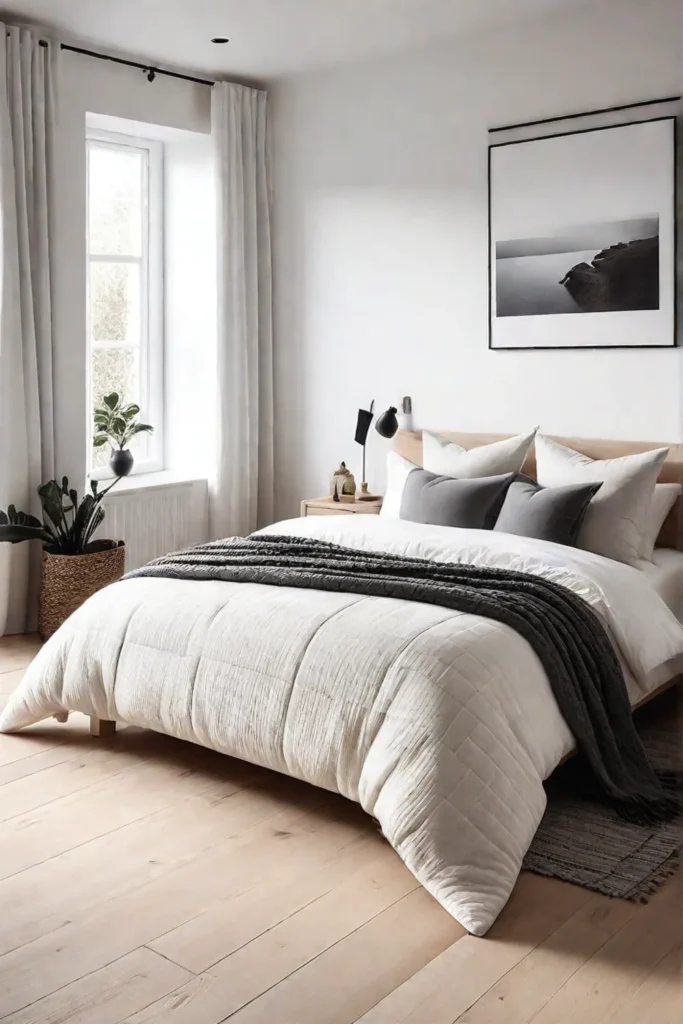
Remember, the path to a more mindful living experience begins with the space you inhabit. When you surround yourself with a thoughtfully curated environment that promotes relaxation and rejuvenation, you’ll find it easier to cultivate inner peace and embrace a more balanced, sustainable lifestyle.
So, take the first step towards your minimalist haven today. Declutter, simplify and let the principles of mindful design guide you in creating a space that truly feels like home – a sanctuary where you can leave the stresses of the world behind and fully recharge. Trust me, your well-rested, centered self will thank you.




